Similar Posts
A year ago a friend visited our monastery for a few days. At the time we had a conversation about sacred art and the process of expressing archetypal realities in iconography. Recently he wrote to me asking, “Have you come across anything… that has shed any light on the question? The question, as I understood it then, was how one moves from a vision of Reality to its artistic expression, especially considering that the one is intelligible and invisible, and the other sensible, visual. I would be interested to hear… what new insights with regards to this topic you have gained over the past many months.” The following are the thoughts I wrote back to him.
Dear Christopher,
It is a question about the “creative act” in iconography, the icon being the symbol that manifests the archetype. In most of the literature about icon painting you encounter a retelling of the conciliar and patristic definition of the icon- its theology in light of the Incarnation. It is less common to encounter writings on the artistic side of the matter, that is, the kind of thinking and process of formal articulation that unfolds in the painter as he works, a noetic work. It goes without saying that, since it is an inner work, it is mostly shrouded in mystery. Within the Orthodox tradition there seems to be little available on the topic, at least in English translations. The Hindu and Buddhist tradition delve into these matters more clearly, with a history of clearly defined aesthetics (See Coomaraswamy, Dance of Shiva). They’ve been around for a while so they’ve had the time to elaborate things a bit more thoroughly. Anyhow, the question is always in the back of my mind. I’m always looking for information on the topic, so far Coomaraswamy has been the most helpful. Let’s look at three things that touch on the subject.
First, the question of the “creative act” is generally looked at in light of the Western infatuation with innovation in the arts and the cult of personality. In short, artistic “creativity” as such is confused with “imagination” and this is in turn confused with fantasy, and is therefore suspect. Second, there is a tendency to overemphasize the unity of the iconographic style across the centuries. Authors do this generally by contrasting an Orthodox icon of the Theotokos, with the multiplicity of styles in Renaissance Madonnas, as a way of stressing that icon painting is based on tradition, whereas the West tends to lean heavily on “artistic creativity” or innovation. The point being of course that Tradition does not change. Nevertheless, we know that traditions express the Tradition in a variety of ways. If we look closely we learn that there are many icon painting schools, each with its own style according to local or national temperament. And within these schools different iconographers express the canon in unique, individual ways, even though they do so according the general and immutable iconographic principles that tie all the schools together.
Even though it happens in small increments, changes do occur in the formal expression of Tradition, forms are not static. When I say “forms” I mean “inessentials.” The “creative act” within iconography is a paradoxical, since within the so called restriction and constraints of Tradition true freedom is found. The Holy Spirit inspires and guides the hand of the iconographer in unique ways within the perimeters of immutable principles. In Pentecost the Spirit enabled the Apostles to speak in different tongues and those gathered in Jerusalem at the time from different nations were able to hear the Gospel in their own language. There was, and there is still in the Church, through the same Spirit, unity in diversity. So likewise, there is a kind of “artistic Pentecost” in iconography, as Aidan Hart has noted, in which we find many styles speaking as different tongues, otherwise there would not be a living Tradition. Finally, the Archetype or Idea is never divorced from its particularized manifestation, but it is rather immanent in it. It is crucial that we maintain this fact, otherwise we fall into dualism, and a metaphysics counter to the Incarnation- the Transcendent in the immanent par excellence. A tree is an actual substantial instance of its archetypal nature- “treeness”. The idea resides in the Logos, but we should not think of it merely as being in another world, disconnected from us. Rather, it is manifested in front of us, in a sensible manner, in the form of this one tree. As an object of sense perception it is a “theophany” of the Logos in this level of reality, and as such it is in fact a symbol. So what then can we say of the “creative act”? How can we express these archetypes?
Traditional icon painting has a precise formal language, general principles of line, color, form, composition, rhythm, etc., which guide us in articulating the archetypes. As in all sacred art, these principles help to transcend the limitations of personal and cultural expression, yet on the other hand, do not completely stifle these. The general principles are the tools, the grammar to articulate the message of this refined dimension of reality. These principles have been tried and tested by centuries and they have arisen out of the creative struggle of the iconographers, in cooperation with the Holy Spirit. The stylization of icon painting is a form of anagogic painting that helps uplift the soul to the noetic vision of archetypes. It does this in the depicting of nature by removing its temporal, accidental, merely fleeting and naturalistic or sensible aspects, thereby abstracting the universal from the particular. If we look at the traditional forms of sacred art around the world we find that there is a tendency to simplify, stylize or abstract form, purify line and a general tendency towards things geometric. In other words, there is a general tendency to arrive at the essential and universal- archetypes.
Since the archetype is present in its substantial, or particularized manifestation, there is no need to wait for a miraculous “illumination ” to experience the “archetypal world”- it is here and now in front of our eyes. We do not have to experience a flight to another dimension disconnected from the thing to be depicted. The canonical forms are an illumination. The “creative act” then is not one of psychic arbitrary choices, but one of intellection (noetic vision) guided by tradition. This intellection unfolds internally as a process of editing formal choices, to arrive at a structure or solution to a given artistic problem, and is first made manifest in the articulation of the drawing. Drawing is the mirror of the intellect. The traditional canon of icon painting gives us sign posts, so to speak, peramiters from which we can edit and make choices in the form of a collection of images which have been unanimously acknowledged as clear intellections- the prototypes. These are to be held in the heart through the faculty of memory. If there is not enough in the archive of the memory, than prototypes and the various examples of the master iconographers are an indispensable aid. Also, the various manuals that have come down to us have instructions and descriptions that tend to be at times too general, cursory and vague, leaving the iconographer ample room to make creative decisions.
The forms of the traditional canon can help us express the treeness of a tree for example, but you will notice, as said above, that these forms are flexible. A tree painted by a Novgorod master in Russia will differ considerably from one depicted by a Cretan master. Nevertheless both of these masters worked within the tradition in such a way that they internalized the general principles and the prototypes in such a way that they did not have to merely copy mechanically the work of their predecessors. They were true to themselves and their historical moment without being merely individualistic or betraying the tradition. They worked creatively from spiritual vision.
Internalization of general principles and the prototypes gives rise to creative spiritual vision. The various traditional forms of sacred art around the world acknowledge the necessity of divine intervention in the creative process of craftsmanship. So do we; it is understood that an iconographer should live a holy life in cooperation with the Holy Spirit who guides his work
and prayer is crucial to purify the mind for the creative act. As Coomaraswamy notes (Dance of Shiva) in the Hindu tradition, various prayers, fasting, rituals, offerings, etc., had to be performed in order to prepare the craftsman to do his work. There was also a process of visualization performed by the craftsman that lead to the vision of the deity which he was to depict. The vision became the pattern, or archetype, he was to depict. Craftsmanship then acquired the status of a kind of yoga.
.
Needless to say, this is not the internalization the icon painter is to seek. Not all iconographers will have lofty spiritual experiences or a revelatory vision to use as a pattern for an icon. In the Orthodox tradition the spiritual experience of the fathers, and holy iconographers, the inspired canonical forms, become the patterns to be depicted. Nevertheless, the Hindu tradition as just described reminds us of the necessity of visualization in the creative process. Here I do not mean the fantasy or the so-called meditation or “spiritual exercises” of Layola. Rather, what I have in mind is the account of the Russian chronicle which describes Theophanes the Greek at work. We are told that he was not like the other iconographers of his time, who hesitated and thought things over for ever, before drawing a line or choosing a color. Theophanes would draw and paint energetically directly on the wall, without looking at the prototypes, as he discussed theological and philosophical matters. He had memorized and internalized the general principles and prototypes of icon painting, in such a way that enabled him to interpret them readily, without hesitation. In his mind (nous) a process of intellection unfolded, an editing of the immense corpus of images in his heart (from nature and canonical types). He had a clear noetic visualization of the image before it was executed as drawing. This process of intellection worked in conjunction with the imagination (image memory capacity of the soul). Seen by some, because of a misreading of patristic passages, as a negative capacity, and confused with fantasy, the imagination, we often forget, is crucial for any creative activity of manufacture or craftsmanship. In the case of Theophanes, the imagination was being used as the middle realm of creative activity which it is (between sense and spiritual perception), in him being imprinted as wax from above (the prototypes) not from bellow (impassioned provocation).
Theophanes’ facility and authority in his craft can be seen as purely a gift of genious, but I believe that the skill he had can be arrived at by arduous effort. He can be seen as the ideal of internalization. Not all iconographers will arrive at this level of “creative act” but they can derive from him a method of self-training. This would involve the memorization of the prototypes and general formal principles of the canon, repeated drawing after the best samples in the tradition, and drawing after nature. The goal is clarity of vision by acquiring a vast memory of images from which to draw from in the creative act. This would liberate the painter from having to be constrained by the interpretation of a former iconographer or mechanical copying.
Theophanes might appear to be almost mythical in stature and too far removed from our own time, but a contemporary iconographer that is suggestive of him is George Kordis, an Assistant Professor of Iconography (Theory and Practice) at the University of Athens. I’ve seen videos of him at work directly on the walls of a Church as he articulates the composition. He works from memory, blocking the figures in fairly rapidly with charcoal. His work displays a clear, personally unique style, expressive in nature, yet remains throughly traditional. Kordis demonstrates that icon painting is not merely a “mechanical craft,” but an art involving creative imagination, full of possibilities a living tradition. I was given the opportunity to meet him in South Carolina last summer and asked him about the secret of his method. He advised me to read his book, Icon as Communion: The ideals and Compositional Principles of Icon Painting, a manual that explores the role of line and the thought underlying the Byzantine artistic system, how it is expressed in the handling of the face, the human figure and composition. I told him I had read the book and at the end of the conversation he just emphasized: “Draw just draw.”
In the end, I would say that internalization of the general principles of icon painting, leading to inner vision, and mastery of drawing, are indispensable tools. From these we can develop eyes that see in the particulars of nature the universal, enabling us to artistically express, or make manifest, the intellection of archetypes.
I hope this doesn’t confuse matters. These are the things that I’ve been thinking about lately related to the topic of the discussion we had.
In Christ,
Fr. Silouan

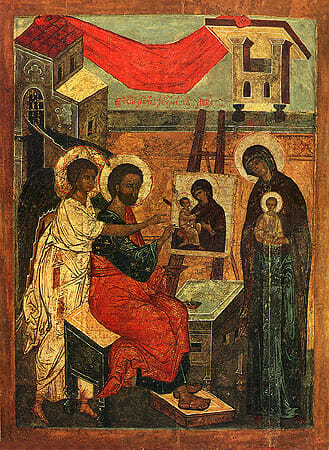
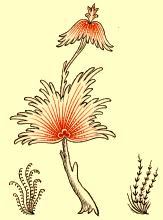
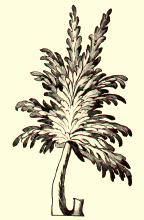
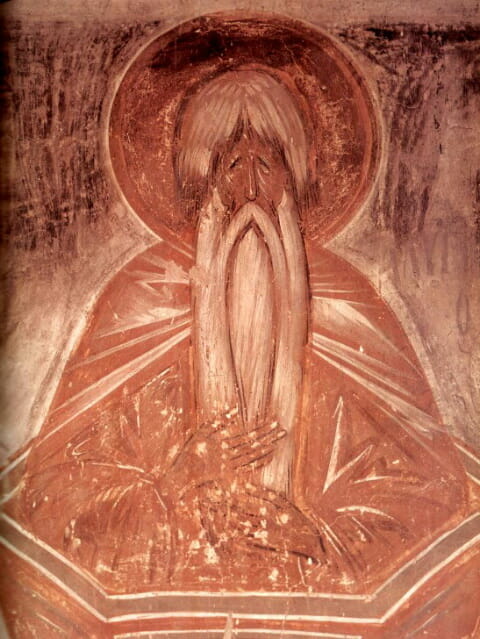
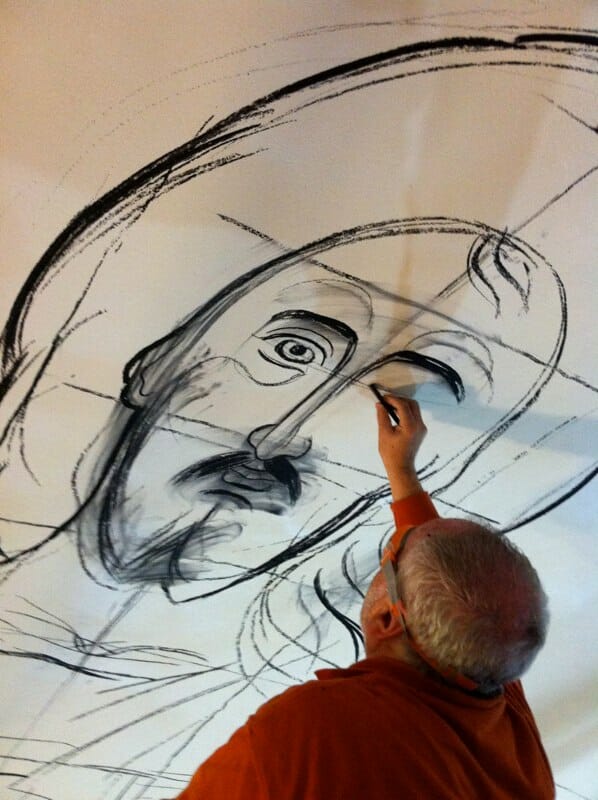
“(It is by image that we) ascend to intelectual contemplations… Imagination is then one of the five faculties of the soul, and imagination itself seems to be a kind of image; for they are both manifestations. The image is not unprofitable therefore, since it is a help to the imagination. If the image were unprofitable, then the imagination which depends on it and co-exists with it would be even more useless, and if it is useless, then so too would be the faculties that co-exist with it – the senses, opinion, unerstanding, the intellect.” St-Theodore Studite quoted by Andrew Louth.
[…] https://orthodoxartsjournal.org/archetype-and-symbol-thoughts-on-the-creative-act/Tuesday, Mar 12th 9:00 amclick to expand… […]